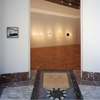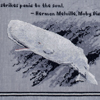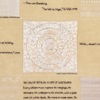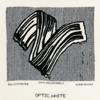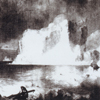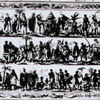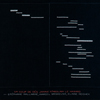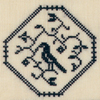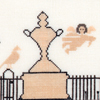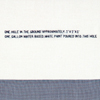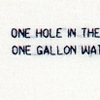At Home & in The World. 1999–2000 Click on images to view project. |
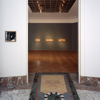 |
||||||||
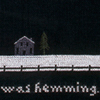 |
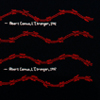 |
|||||||
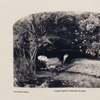 |
||||||||
 |
 |
|
||||||
The subject of At Home & in the World is black and white. Those colors—or rather those places, at opposite ends of the spectrum, where color vanishes—have long associations in the history of modernism, which is notorious for its interest in purifying the artist’s palette, whether by confining it to the primaries or by almost erasing it altogether. In college I studied with Ad Reinhardt, whose near-mystical attempts to produce modernism’s last, ultimate paintings—purely retinal works, with no content other than visual experience—won him the nickname “the black monk.” On the other hand, an important context of modern art, the gallery, is white—a space designed to obliterate any sense of history and of the body, to suggest a timeless aesthetic divorced from life’s dirty realities. The white wall, the blank canvas, the empty white page—all of these haunt modern thought.
Free-associating on “white,” an analysand might think of the hospital and the nurse (the sanitary) or housework (whiter than white, cleaner than clean) and the domestic, interior, ahistorical space conventionally associated with women. Or the exclusion of decoration, which is associated with women; the exclusion of sexuality, which is associated with women; the idealization of the virginal, the untouched, the unpenetrated, the desexualized, the pure. Or the lifeless, the dead. Snow and ice: cold as opposed to heat, north as opposed to south, mind as opposed to body. Abstract rationality. The expulsion of color: a language of repression, of erasure. Whitewashing, hiding a secret (white paint will cover anything). The confession that cleanses guilt. Colonialism, and the sense of racial superiority that made Victorian Britons speak of “the white man’s burden,” the job—the responsibility—of running the world. The blank space on the map, the unknown. The pretense of neutrality, the pretense of perfection. Silence, desolation, emptiness, despair. Run “black” through your mind and you’ll get just as long a list.
Just as my earlier work traces ideas about thread-work through a selection of its countless appearances in writing and visual art (see When This You See . . ., 1994–99), the embroideries in At Home & in the World, in dealing with black and white, deal with all the things that an artist like Reinhardt, in constantly reducing his palette, thought he was getting rid of: politics, race, sexuality, culture, and society.
The exhibition At Home & in the World at the Palais des Beaux-Arts, Brussels, in 2000, included When This You See . . . , a video based on movie clips of women sewing, weaving, or knitting, compiled from a wide range of films dating from the 1920s to the 1990s. Here, too, images are combined with text, in this case one-word interventions that reveal and comment upon the heroine’s inner motivation: “Revenge” (Michelle Pfeiffer in Batman), “Obsession” (Melanie Lynskey and Kate Winslett in Heavenly Creatures), “Fabrication” (Audrey Hepburn in Breakfast at Tiffany’s), and “Revolution” (Carole Bouqet in That Obscure Object of Desire).
|
